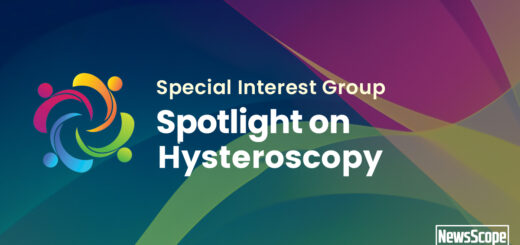Illuminating the Path: Why AAGL Embraces a New SIG in Specialized Ultrasound and Imaging

“The eye cannot see what the mind does not know.” This medical adage perfectly captures why advanced imaging education transforms gynecologic practice.
The AAGL has long been at the forefront of minimally invasive gynecologic surgery, providing education, research, and advocacy for improved patient care. As imaging technology rapidly evolves, the establishment of a Special Interest Group (SIG) focused on Advanced Gynecologic Ultrasound and Imaging represents a timely and critical advancement in the organization’s mission to enhance gynecologic care.
Advanced imaging techniques have transformed the diagnosis and management of gynecologic conditions, bridging the gap between clinical assessment and surgical intervention. For conditions like endometriosis, fibroids, chronic pelvic pain, and ovarian pathologies, high-quality imaging serves as the cornerstone of accurate diagnosis and appropriate treatment planning. This dedicated SIG creates a structured framework for specialists to collaborate, innovate, and disseminate expertise in this rapidly evolving field.
We acknowledge the visionary founding members of this new SIG whose passion and commitment have made this initiative possible. These pioneers recognized that excellence in gynecologic care requires mastery not only of surgical techniques but also of sophisticated diagnostic imaging. Their dedication to advancing the field will undoubtedly inspire generations of practitioners to come.
A unique strength of the Advanced Gynecologic Ultrasound and Imaging SIG lies in its ability to integrate seamlessly with all eight existing AAGL SIG groups. Whether enhancing robotic surgery planning, improving endometriosis visualization, guiding hysteroscopic procedures, informing reproductive surgery, supporting oncologic assessments, refining pelvic floor interventions, aiding in pediatric and adolescent cases, or complementing minimally invasive techniques, advanced imaging serves as a unifying thread that strengthens the entire fabric of gynecologic practice. This cross-disciplinary integration creates opportunities for collaborative innovation that transcends traditional subspecialty boundaries.
“What we see depends mainly on what we look for.” As John Lubbock noted, our diagnostic yield is determined by our expertise in looking. The Advanced Gynecologic Ultrasound and Imaging SIG elevates this expertise.
Specialized ultrasound has evolved to become a natural extension of the gynecologist’s pelvic examination—where fingertips once served as the sole diagnostic tool, the ultrasound probe now functions as a sophisticated digital extension of the clinician’s hand. This technological evolution transforms the traditional bimanual examination into a dynamic, real-time visualization of pelvic structures, allowing clinicians to see beyond physical touch and directly observe the architecture, vascularity, and mobility of pelvic organs. Like a skilled pianist whose fingers intuitively find the right keys, the gynecologist wielding an ultrasound probe develops a harmonious integration of tactile awareness and visual information, creating a comprehensive diagnostic symphony that elevates patient care to new heights of precision and insight.
Endometriosis, affecting approximately 10% of reproductive-age women, presents unique diagnostic challenges due to its variable presentation and the limitations of conventional imaging. Specialized techniques such as transvaginal ultrasound with enhanced protocols for detecting deep infiltrating endometriosis have demonstrated improved diagnostic accuracy comparable to MRI in expert hands. These advanced approaches can identify subtle lesions, bowel involvement, and adhesions that might otherwise be missed with standard imaging, potentially reducing diagnostic delays that currently average 7-10 years.
For fibroids, which affect up to 70% of women by age 50, detailed imaging is essential for determining appropriate management strategies. Specialized ultrasound techniques facilitate precise mapping of fibroid location, size, vascularity, and relationship to the endometrial cavity—critical factors that influence treatment decisions regarding myomectomy approaches, candidacy for uterine artery embolization, or suitability for focused ultrasound therapy. This level of detail directly impacts surgical planning and patient counseling.
Chronic pelvic pain presents one of the most complex diagnostic challenges in gynecology. The Advanced Gynecologic Ultrasound and Imaging SIG promotes expertise in comprehensive assessment protocols that can identify subtle anatomical abnormalities, including adenomyosis, pelvic congestion syndrome, and musculoskeletal contributors that might otherwise be overlooked. Dynamic ultrasound techniques can assess pelvic floor dysfunction and identify trigger points that contribute to pain syndromes.
For ovarian pathologies, from functional cysts to endometriomas and neoplasms, specialized imaging improves characterization and risk stratification. International Ovarian Tumor Analysis (IOTA) protocols and other standardized assessment tools have revolutionized the evaluation of adnexal masses, but implementation remains inconsistent. This dedicated SIG facilitates wider adoption of these evidence-based approaches and promotes standardization of reporting.
“Vision is the art of seeing what is invisible to others.” — Jonathan Swift’s words encapsulate the essence of specialized imaging in gynecology: revealing pathology that remains hidden to the untrained eye.
Beyond these specific conditions, the Advanced Gynecologic Ultrasound and Imaging SIG serves multiple critical functions within AAGL:
First, it establishes standardized protocols and quality metrics for advanced gynecologic imaging, promoting consistency across practices and improving diagnostic accuracy. This standardization is particularly valuable for complex conditions that benefit from systematic evaluation approaches.
Second, it creates a platform for education and skills development. Through workshops, mentorship programs, and collaborative learning opportunities, gynecologists enhance their imaging interpretation skills, ultimately improving their surgical planning and patient outcomes.
Third, it fosters innovation through research collaboration. By connecting specialists across institutions, the SIG facilitates multicenter studies to validate new imaging techniques and develop novel approaches to challenging diagnostic dilemmas.
Fourth, it strengthens the crucial connection between diagnostic imaging and surgical intervention. By improving preoperative mapping and characterization of pathology, surgeons optimize their approach, potentially reducing operating time, improving complete excision rates, and enhancing patient safety.
The impact on patient advocacy cannot be overstated. Empowered with enhanced imaging capabilities, gynecologists become more effective advocates for their patients, armed with objective visual evidence that validates patients’ symptoms and supports appropriate intervention. For conditions like endometriosis, where patients often face dismissal understanding of their symptoms, sophisticated imaging provides validation and accelerates access to appropriate care pathways.
This SIG also presents an unprecedented opportunity to develop dedicated fellowships in gynecologic ultrasound, creating a new generation of specialists with dual expertise in both imaging and surgical management. Just as mastery of the laparoscope, hysteroscope, and scalpel are fundamental to gynecologic surgery, proficiency in advanced imaging is equally essential. By integrating specialized imaging training into residency curricula and fellowship programs, we elevate the standard of care across the specialty.
“The more I see, the less I know for sure.” John Lennon’s humility reminds us that advanced imaging doesn’t just answer questions, it prompts new ones, driving innovation and deeper understanding.
As minimally invasive gynecologic surgery continues to evolve toward increasingly precise and targeted interventions, the quality of preoperative imaging becomes ever more critical. By establishing the Advanced Gynecologic Ultrasound and Imaging SIG, AAGL recognizes this vital relationship and creates infrastructure to support excellence in this domain. The result is more accurate diagnoses, better-informed surgical planning, enhanced patient counseling, and ultimately, improved outcomes for women with complex gynecologic conditions.
To join this, or one of AAGL’s other nine SIGS, please complete this form.



